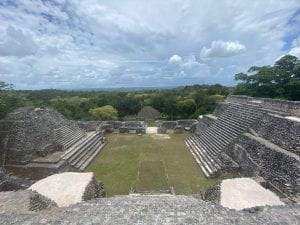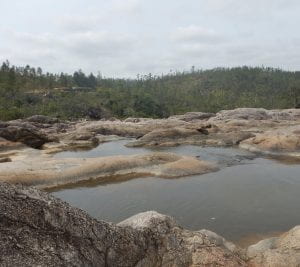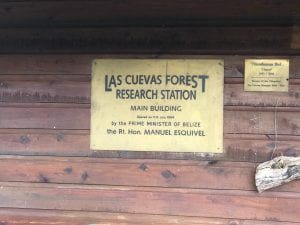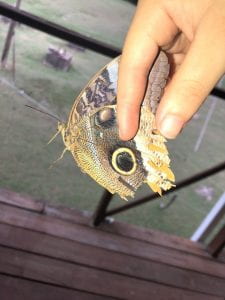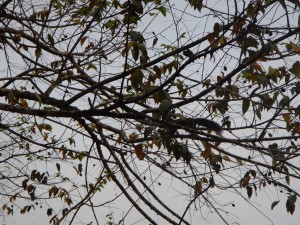Hi everyone!
Today was really great, yet also very tiring! We were traveling from the Tropical Education Center (TEC) to the Las Cuevas Research Station (LCRS). Yet, along the way we made a stop at a place that I absolutely loved! We stopped at Caracol, a Mayan Archeological Site.
There we were given a tour by Leo, who was super knowledgeable about the site! He told that he was even part of the archeological team at some point of the excavation. He led us through a couple of sites, including one that the Mayas would use as an observatory. I thought that was the coolest of the structures, especially after Leo mentioned that the Mayas could use those buildings to track the passage of the months; according to Leo the Mayas could tell the time of the year by the position at which the sun rose relative to their observatory. It was at this same observatory that I got to see one of my taxa. I saw a carpenter bee. I was able to identify it by its bulky size, it’s black coloration and it’s fluffy appearance! It was doing quite a weird behavior, it was carrying a small branch.
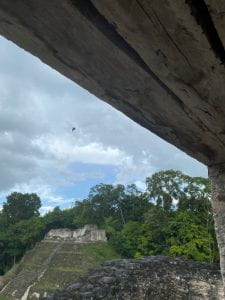
Although I still do not know if this is common behavior in this species, I will Google this next time I have internet!

